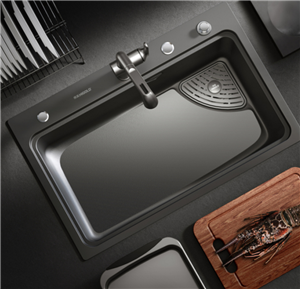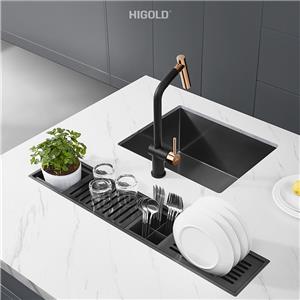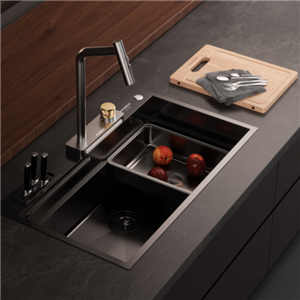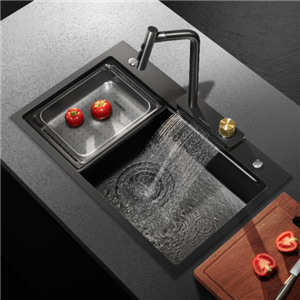Which kitchen sink has the lowest maintenance cost?
The kitchen sink is an essential and important facility in the kitchen. It undertakes multiple functions such as daily washing, cleaning, and drainage. Since the sink is used very frequently, its durability, ease of maintenance, and difficulty of cleaning have become key factors that many consumers need to consider when choosing a sink. Among the many types of kitchen sinks, how to choose a sink with the lowest maintenance cost has become a major problem for many people when decorating. Sinks of different materials require different maintenance methods during use, and their maintenance costs vary depending on the material, design, and use environment.
This article will analyze several common kitchen sink materials in detail and compare their maintenance costs to help consumers make more rational decisions when choosing kitchen sinks, ensure low maintenance costs in long-term use, and provide practical suggestions for cleaning and maintenance to help the sink stay in the best condition.
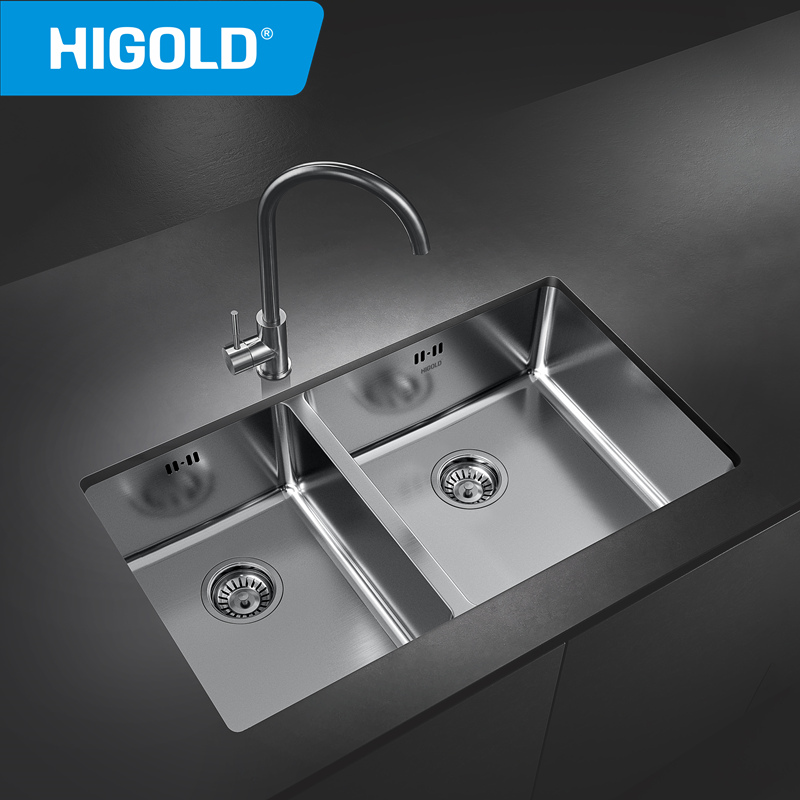
What are the types of kitchen sinks?
There are many types of kitchen sinks on the market, which can be mainly divided into stainless steel sinks, ceramic sinks, quartz sinks, composite sinks, etc. Different types of sinks have different performances in maintenance and maintenance due to differences in materials, and there are also large differences in maintenance costs. When choosing a sink, in addition to considering aesthetics and functionality, long-term maintenance costs should also be an important consideration.
Maintenance costs refer to the maintenance and repair costs required for the sink during long-term use, including expenses for cleaning, decontamination, damage prevention, and scale prevention. Sinks with low maintenance costs can not only save consumers time and money, but also ensure that the sink remains in good condition for a long time and avoid frequent replacement.
Maintenance cost analysis of different types of kitchen sinks
1. Stainless steel sinks
Stainless steel sinks are the most common type of kitchen sink on the market. They are durable, affordable, and easy to install. They are the first choice for many home and commercial kitchens. Although stainless steel sinks have many advantages, their maintenance costs are relatively low. The following is a specific analysis of their maintenance costs.
Advantages of stainless steel sinks:
● Strong durability: Stainless steel sinks are corrosion-resistant and oxidation-resistant, have a long service life, and are not easy to deform or damage. Even after long-term use, the surface of the sink is not prone to scratches or peeling, and maintenance does not require frequent overhauls.
● Easy to clean: The surface of stainless steel is smooth and stains are not easy to adhere. For daily cleaning, you only need to wipe it with warm water and neutral detergent, avoiding dependence on special detergents. For daily oil stains, fruit and vegetable residues and other minor stains, usually just a light wipe can be removed.
● Strong anti-scale ability: Due to the high smoothness of the stainless steel surface, scale is not easy to adhere. When used in areas with hard water, it is easier to clean and has lower maintenance costs than sinks made of other materials.
Disadvantages of stainless steel sinks:
● Scratch problem: Although stainless steel has strong durability, it may still cause small scratches on the surface of the sink due to scratches by hard objects or long-term contact with hard objects during use. Once these scratches are formed, they are difficult to remove during cleaning, which may affect the appearance and cleaning effect.
● Difficulty of maintenance: Although stainless steel sinks are relatively simple to clean on a daily basis, if they are not cleaned regularly, stains may accumulate, especially water stains and grease, which are difficult to remove completely. Regular cleaning can effectively avoid dirt accumulation, but this also requires consumers to spend a certain amount of time and effort.
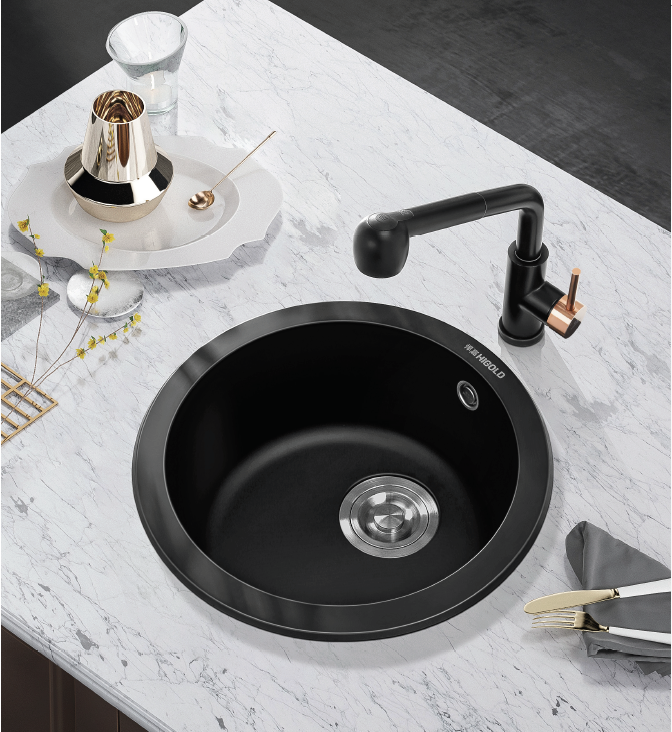
2. Ceramic sinks
Ceramic sinks are popular among consumers for their elegant appearance and smooth surface. Ceramic sinks are often used to improve the overall aesthetics of kitchen decoration, but their maintenance costs are relatively high.
Advantages of ceramic sinks:
● Beautiful and elegant: The surface of ceramic sinks is smooth and has a certain gloss, rich colors, and can add a sense of elegance and high-end to the kitchen.
● Strong stain resistance: The surface of ceramic sinks is not easy to adhere to oil and scale, and daily cleaning is relatively easy.
Disadvantages of ceramic sinks:
● Fragile: Ceramic sinks are prone to cracking or breaking once they collide or are hit by heavy objects. If the sink is damaged, the repair cost is high, and the entire sink may even need to be replaced. Therefore, although the daily maintenance cost of ceramic sinks is low, its maintenance and repair costs are high, especially in the case of accidental damage.
● Scratches are difficult to remove: If a ceramic sink has scratches or stains during use, it is difficult to clean, especially deep scratches. Once the surface is damaged, the repair process is more complicated and usually requires professional treatment.
● High cleaning requirements: Although the surface of the ceramic sink is smooth, if it is not cleaned for a long time, stains such as oil and scale are easy to adhere to the surface, making it difficult to remove the stains. Therefore, ceramic sinks require more frequent cleaning and care, which increases the maintenance cost of long-term use.
3. Quartz sinks
Quartz sinks have gradually emerged in the kitchen sink market in recent years. Quartz sinks are made of a mixture of quartz sand and resin materials. They have both the hardness of stone and the toughness of resin and are extremely durable. However, the maintenance cost of quartz sinks has also increased due to the special nature of its material.
Advantages of quartz sinks:
● Scratch and wear resistance: The hardness of quartz sinks is higher, which is more scratch and wear resistant than ordinary stainless steel sinks, and can effectively avoid scratch problems.
● Strong anti-fouling ability: The surface of quartz sinks is not easily eroded by pollutants such as oil and juice, and daily cleaning is relatively easy, reducing the trouble of cleaning.
● High temperature resistance: Quartz sinks can withstand high temperatures, avoiding surface damage caused by high-temperature pots and sinks.
Disadvantages of quartz sinks:
● Deposition of stains: Although quartz sinks are not easily corroded by oil stains, due to their porous surface, if they are not cleaned regularly, stains and water stains may accumulate on the surface of the sink. Especially after long-term use, quartz sinks may show traces of water stains, which are difficult to clean.
● Susceptible to the influence of chemicals: Some strong acid or alkaline cleaners may damage quartz sinks, causing the surface of the sink to fade or corrode. This requires consumers to be extra careful when choosing cleaners.
● Difficult to repair: If a quartz sink is broken or severely damaged, it is difficult to repair, and the entire sink usually needs to be replaced. Compared with sinks made of other materials, quartz sinks have higher maintenance costs, especially when they are broken or damaged over a large area, the repair cost cannot be ignored.
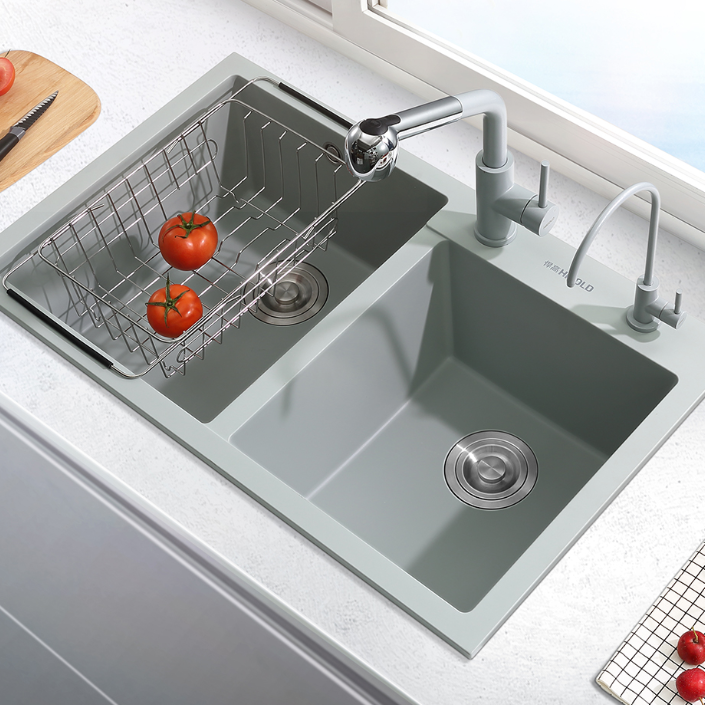
4. Composite sinks
Composite sinks are made of a mixture of various natural minerals and resins, which have both the hardness of stone and good durability. Similar to quartz sinks, composite sinks also have strong anti-fouling ability.
Advantages of composite sinks:
● Anti-fouling and scratch-resistant: The surface hardness of composite sinks is high, which can effectively resist scratches and stain accumulation, and daily cleaning is relatively easy.
● High temperature resistance: Composite sinks are excellent in high temperature resistance and can withstand direct contact with high-temperature pots and pans without being damaged by high temperatures.
Disadvantages of composite sinks:
● Easily affected by chemicals: Although composite sinks have strong anti-fouling ability, strong acid and strong alkaline cleaners may corrode their surface, resulting in a decrease in surface gloss. Therefore, consumers need to be particularly careful in choosing cleaning products.
● High maintenance costs: Once a composite sink is damaged or damaged over a large area, it is difficult to repair, and the entire sink usually needs to be replaced. This makes its maintenance cost relatively high.
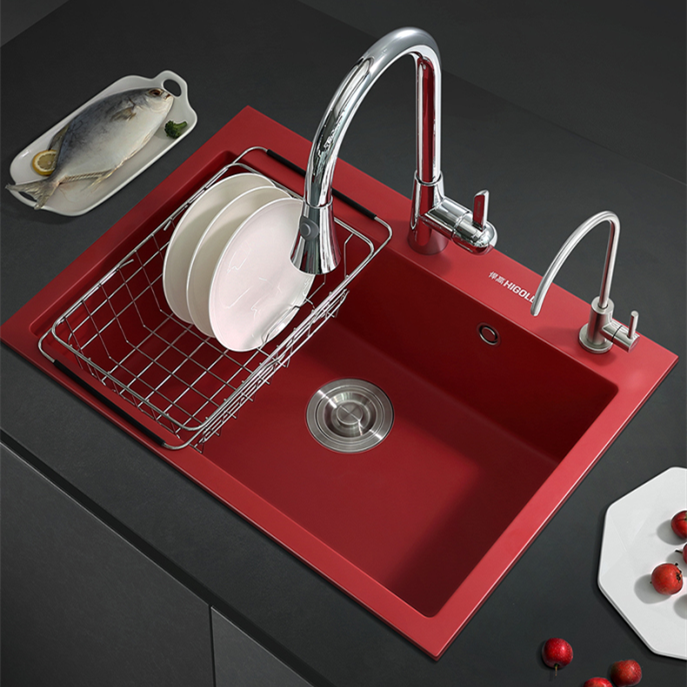
Get Customized Kitchen Sinks and Faucets from Higold
Looking for a reliable manufacturer of kitchen hardware? Higold Group specializes in producing high-quality stainless steel Inox sinks and faucets, available for wholesale and customized orders. Our automated production lines and commitment to quality ensure that we can deliver products on time and at affordable prices. With over 500 patents and an experienced team, we are ready to meet your sourcing needs. Contact us for quotes and see how we can support your business with our premium kitchen hardware.

